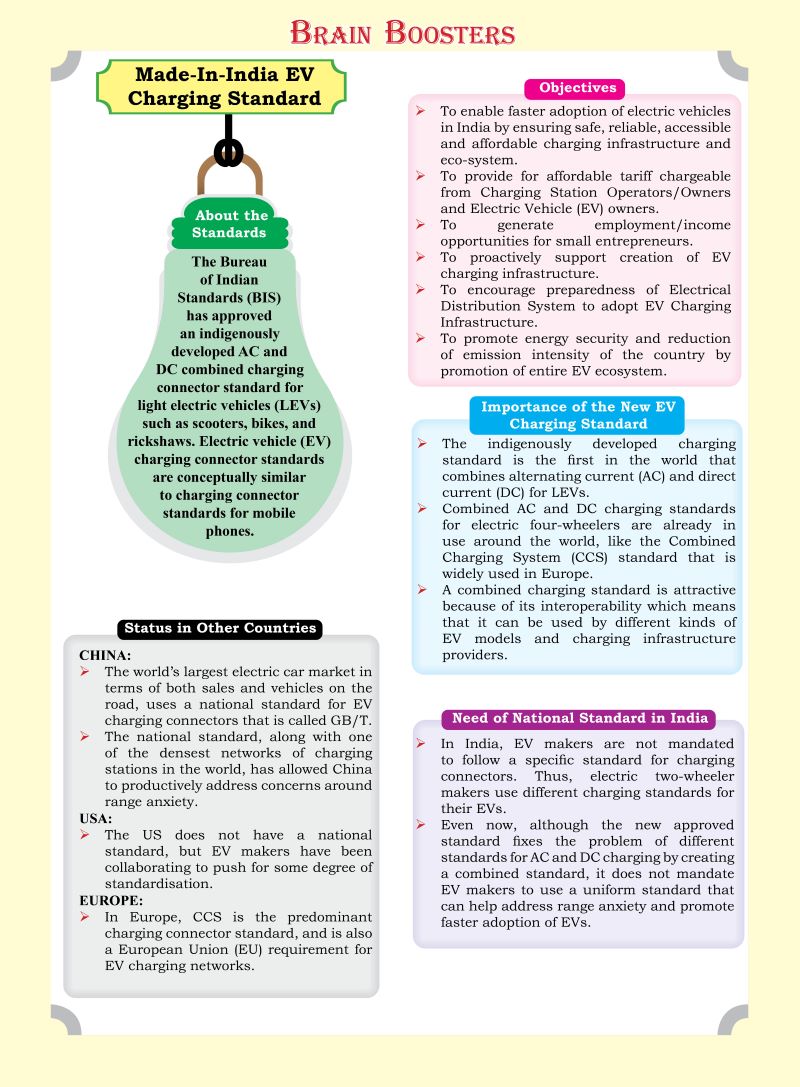1. About the Standards
The Bureau of Indian Standards (BIS) has approved an indigenously developed AC and DC combined charging connector standard for light electric vehicles (LEVs) such as scooters, bikes, and rickshaws. Electric vehicle (EV) charging connector standards are conceptually similar to charging connector standards for mobile phones.
2. Status in Other Countries
CHINA:
- The world’s largest electric car market in terms of both sales and vehicles on the road, uses a national standard for EV charging connectors that is called GB/T.
- The national standard, along with one of the densest networks of charging stations in the world, has allowed China to productively address concerns around range anxiety.
USA:
- The US does not have a national standard, but EV makers have been collaborating to push for some degree of standardisation.
EUROPE:
- In Europe, CCS is the predominant charging connector standard, and is also a European Union (EU) requirement for EV charging networks.
3. Objectives
- To enable faster adoption of electric vehicles in India by ensuring safe, reliable, accessible and affordable charging infrastructure and eco-system.
- To provide for affordable tariff chargeable from Charging Station Operators/Owners and Electric Vehicle (EV) owners.
- To generate employment/income opportunities for small entrepreneurs.
- To proactively support creation of EV charging infrastructure.
- To encourage preparedness of Electrical Distribution System to adopt EV Charging Infrastructure.
- To promote energy security and reduction of emission intensity of the country by promotion of entire EV ecosystem.
4. Importance of the New EV Charging Standard
- The indigenously developed charging standard is the first in the world that combines alternating current (AC) and direct current (DC) for LEVs.
- Combined AC and DC charging standards for electric four-wheelers are already in use around the world, like the Combined Charging System (CCS) standard that is widely used in Europe.
- A combined charging standard is attractive because of its interoperability which means that it can be used by different kinds of EV models and charging infrastructure providers.
5. Need of National Standard in India
- In India, EV makers are not mandated to follow a specific standard for charging connectors. Thus, electric two-wheeler makers use different charging standards for their EVs.
- Even now, although the new approved standard fixes the problem of different standards for AC and DC charging by creating a combined standard, it does not mandate EV makers to use a uniform standard that can help address range anxiety and promote faster adoption of EVs.







